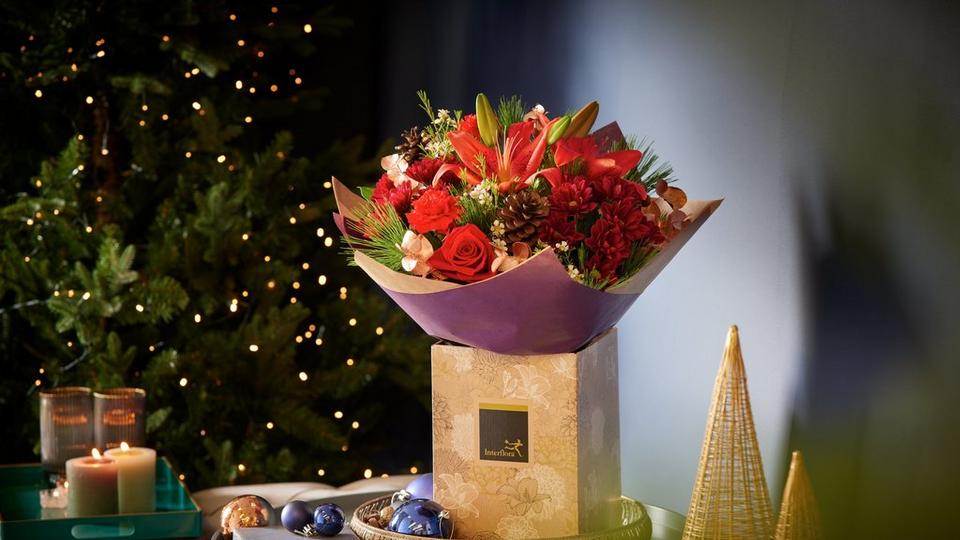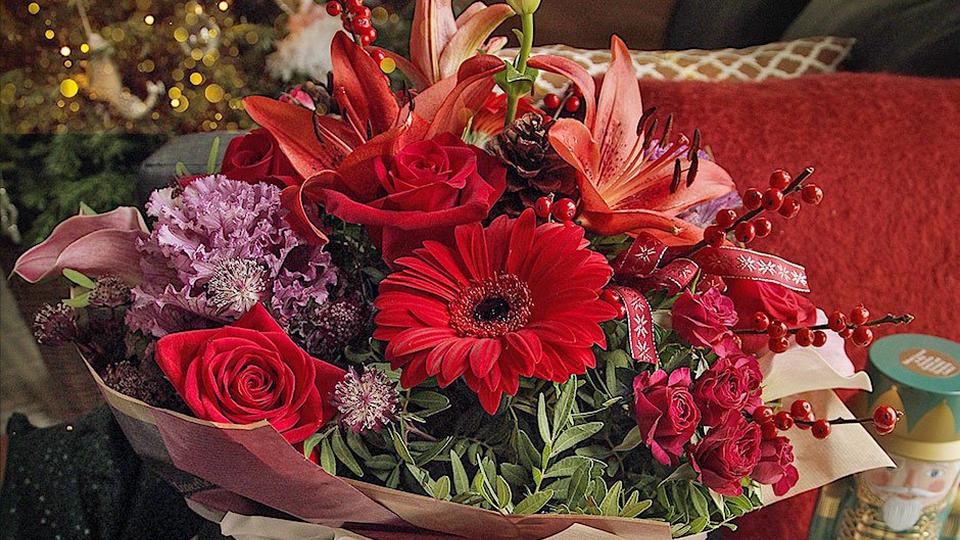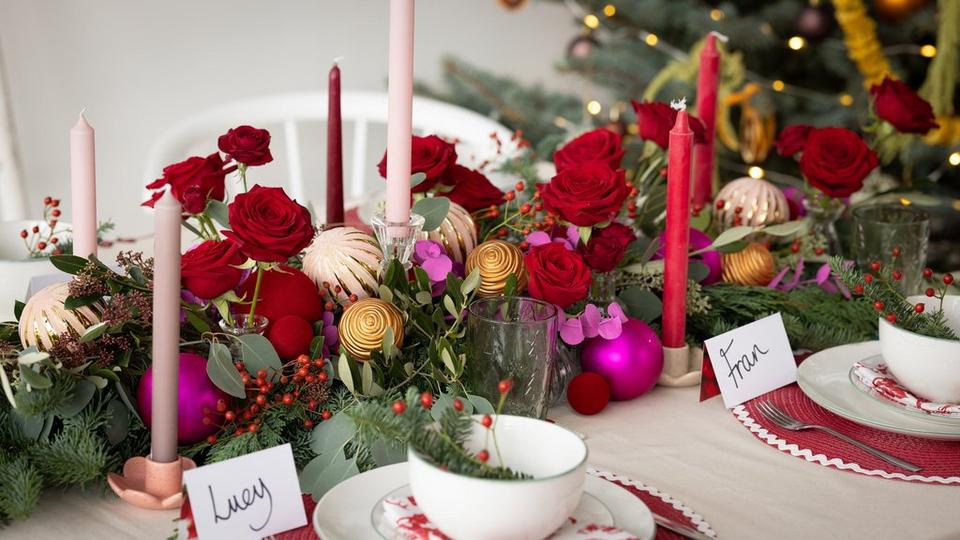How to Make a Christmas Garland
Read time - 8 mins

Step by step guide to making a Christmas garland
Instructions
Cut your string to the length you want
The string is your base (it’s less harmful to the environment than floral foam).
We made our garland for a mantlepiece, but you could do one for the Christmas table, your dresser or stair banister.
Prep your foliage
Cut you spruce, eucalyptus, hypericum, skimmia and conifer into pieces (range them from around 10 – 20cm) and make a few piles ready to use. It should be starting to smell like Christmas!
TOP TIP: Remove the leaves from the hypericum berries, they go brown and don’t last as long as the rest of the foliage.
Start wrapping
Yes more Christmas wrapping, but a different kind. Take a piece of each of your bits of green foliage and berries and create a nice bundle, hold it against your string with one hand, and with the other end take your florists wire and wrap it around the end of your foliage bundle and string serval times to secure them together. Make a second bundle and secure it to the string with your florists wire, placing it half way down the first bundle, so they overlap and there is no gap. Keep repeating this process.
Keep wrapping!
Keep adding foliage and berry bundles. When you get to the end of your string and the final bundle, add it so it is pointing inwards in the opposite direction to the rest so that you don’t have a messy garland end of stems, wrap it several times with florists wire to secure.
TOP TIP: Tuck spruce into any areas of exposed florists wire as the wire nestle and hides in the needles.
The final flurry
This classic garland will look lovely and festive as it is, but we like to add a little Interflora Christmas twist with addition of more Eucalyptus painted in metallic copper and our dramatic flower of choice, the anthurium, but you can choose any flower. Use the structure of your garland to slot these extra pieces into between the layered foliage bundles, securing with more florists wire as needed.
TOP TIP: Many flowers come supplied in individual water vials, ask your florist to keep them for your garland flowers.
Alternatively you may wish to add more traditional dried fruit and pinecones to your garland, the artistic licence really is all yours with this, so enjoy being creative.
Add dried fruit: To attach a dried orange slice, take 15cm of wire and push it through the flesh just below the skin of the orange, pull the two bits of wire together and do a few twists, then pull the wire straight. To attach it to the garland push it through the foliage to the string, then flip the garland over and find the end of the wire. Bend it back towards the orange, tucking it around the string. Repeat for your other orange pieces and spread them along your garland. Dried grapefruit and lemons also work well.
Add pinecones: To attach the wire to a pinecone, grab one and have the pointy end facing towards you. Take a 15cm piece of wire and thread it through the cone, so you have equal amounts either side. Pull one of the sides around the bottom of the cone, nice and tight, so it joins the other piece of wire. Twist the wire ends together, then straight it out – now it’s ready to attach to the garland the same way you did your orange slices.
Voila, your gorgeous garland is done! All you need to do is gently move it to where it’ll be on show and soak up the joy of making something so lovely (and low impact on the planet).
Making a sustainable Christmas garland
‘Sustainable’ is a funny word – what does it really mean? Well, here we’re using it to mean a garland that doesn’t use irreplaceable natural resources, cause environmental harm or upset the balance of our planet’s ecosystems. We want garlands that are green in every sense! There are a few ways to make sure your homemade garland is sustainable, and a few things to watch out for.
- Don’t use floral foam (this is usually fossil fuel based).
- Use plants and foliage grown locally (or in the UK) and/or organically (this reduces their carbon footprint through travel or through growing them in an intensive way).
- Compost your garland after the festivities are over.
- Reuse your floral wire year after year.
While it’s tempting to use a plastic garland because it won’t wilt, the manufacture of it will use fossil fuels, and it could take up to 500 years to break down (often into harmful materials that cause pollution and harm to the environment). Opting for a fresh garland avoids this, and it should still be long-lasting – the foliage we picked for ours should last at least two weeks, if not longer, and don’t forget to spritz it with water regularly to help in on it’s journey to longevity.



